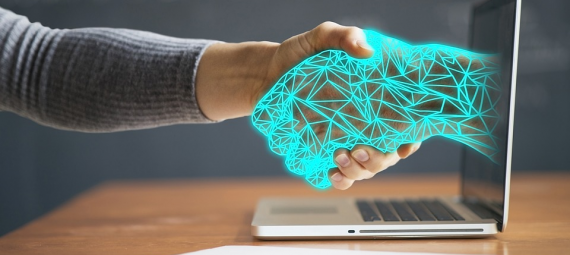The potential for machinery and AI to benefit the public education system has grown substantially over the last few years. Here’s some progress we made:
Do you remember your school time? Right, sorry I brought back this darkest of all time to you and if you still are a student, then I am sorry, friend. While school is not useless, our public education system in the US but also in many European countries might want to download some upgrades because it turns out that students with learning disabilities like ADHD, for instance, are systemically underprivileged.

Children with learning disabilities often require additional educational care to fill academic gaps, such as one-on-one instructions provided by the teacher. Now, obviously, that puts a lot of pressure on teachers and it is simply not doable in real life. Teachers nowadays are not only confronted with inclusion but also increased diversity and skills shortages. Help is desperately needed in our public education systems.
Remember that one teacher, who could magically make five minutes feel like twenty hours? Now, these teachers made learning in class hard for everybody, but now imagine what it was like for children with ADHD, Autism, or other learning disabilities.
But not all heroes wear capes. In this case, our hero is a humanoid robot called QT. Engineering Researchers at the University of Waterloo conducted along with three experts from the Learning Disabilities Society in Vancouver, a series of tests with QT as an article in “ScienceDaily” from February 21, 2023 reports:
“
Building on promising earlier research, the researchers divided 16 students with learning disabilities into two groups. In one group, students worked one-on-one with an instructor only. In the other group, the students worked one-on-one with an instructor and a QT robot. In the latter group, the instructor used a tablet to direct the robot, which then autonomously performed various activities using its speech and gestures.
While the instructor controlled the sessions, the robot took over at certain times, triggered by the instructor, to lead the student.
“
For all the teachers among you, don’t tell me that’s not what you always dreamt of. And for all the students…don’t tell me that’s not what you always dreamt of!
The robot tracked the learning process and when the students lost their concentration, it used strategies like games, riddles, jokes, or breathing techniques, which naturally motivated the students. Not only are all these strategies proven to be good motivation factors and concentration exercises, but it’s also a freaking robot that does all that. After Covid, the climate crisis, and the War in Ukraine, that’s probably the first time in years I am jealous of the next generation.
An article in ScienceDaily reported:
“Students who worked with the robot, Dautenhahn said, “were generally more engaged with their tasks and could complete their tasks at a higher rate compared” to the students who weren’t assisted by a robot. Further studies using the robot are planned.“
Astrophysics, medicine, and politics are all super exciting but we, as people interested in Science do not put enough attention on educational Research when that is Research that could change our children’s lives so much and also solve a lot of problems we currently face in society with racial disparity, inclusion, skills shortage, decreasing IQ-levels and so on. Education shapes our society and children are the future, yeah I know you think they are annoying and kinda gross and actually they are, but they are important and so is Research on schools and children.
References:
The University of Waterloo. “Robot helps students with learning disabilities stay focused: There is great potential for using robots in the public education system.” ScienceDaily. ScienceDaily, 21 February 2023. <www.sciencedaily.com/releases/2023/02/230221113129.htm>.
Read the paper here


Thank you a lot for providing individuals with a very spectacular possibility to read critical reviews from this site.
I’m so in love with this. You did a great job!!